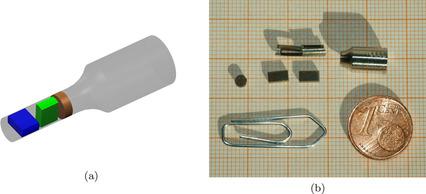当前位置:
X-MOL 学术
›
Isr. J. Chem.
›
论文详情
Our official English website, www.x-mol.net, welcomes your feedback! (Note: you will need to create a separate account there.)
Relationship between Phase Fractions and Mechanical Properties in Heat‐Treated Laser Powder‐Bed Fused Co‐Based Dental Alloys
Israel Journal of Chemistry ( IF 3.2 ) Pub Date : 2020-03-09 , DOI: 10.1002/ijch.201900156 Jonas Kobylinski 1 , Leonhard Hitzler 1 , Robert Lawitzki 2 , Christian Krempaszky 1 , Andreas Öchsner 3 , Ewald Werner 1
Israel Journal of Chemistry ( IF 3.2 ) Pub Date : 2020-03-09 , DOI: 10.1002/ijch.201900156 Jonas Kobylinski 1 , Leonhard Hitzler 1 , Robert Lawitzki 2 , Christian Krempaszky 1 , Andreas Öchsner 3 , Ewald Werner 1
Affiliation

|
Metal additive manufacturing of dental prostheses consisting of cobalt−chromium−tungsten (Co−Cr−W) alloys poses an alternative to investment casting. However, metal additive manufacturing processes like Laser Powder‐Bed Fusion (LPBF) can impact the elastic constants and the mechanical anisotropy of the resulting material. To investigate the phase compositions of mechanically different specimens in dependence of their postprocessing steps (e. g. heat treatment to relieve stress), the current study uses X‐ray Diffraction (XRD), Electron BackScatter Diffraction (EBSD), and Transmission Electron Microscopy (TEM) for phase identification. Our studies connect plastic deformation of Remanium star CL alloy with the formation of the hexagonal ϵ‐phase and heat treatment with the formation of the D024‐phase, while partially explaining previously observed differences in Young's moduli.
中文翻译:

热处理激光粉末床熔融钴基牙科合金的相分数与力学性能之间的关系
由钴-铬-钨(Co-Cr-W)合金组成的假牙的金属增材制造是熔模铸造的替代选择。但是,诸如激光粉末床熔合(LPBF)之类的金属增材制造工艺会影响所得材料的弹性常数和机械各向异性。为了研究机械不同样本的相组成,取决于它们的后处理步骤(例如,热处理以减轻应力),当前的研究使用X射线衍射(XRD),电子背散射散射(EBSD)和透射电子显微镜(TEM)用于相位识别。我们的研究将Remanium star CL合金的塑性变形与六角形ϵ的形成联系起来相和热处理与D024相的形成,同时部分解释了先前观察到的杨氏模量差异。
更新日期:2020-03-09
中文翻译:

热处理激光粉末床熔融钴基牙科合金的相分数与力学性能之间的关系
由钴-铬-钨(Co-Cr-W)合金组成的假牙的金属增材制造是熔模铸造的替代选择。但是,诸如激光粉末床熔合(LPBF)之类的金属增材制造工艺会影响所得材料的弹性常数和机械各向异性。为了研究机械不同样本的相组成,取决于它们的后处理步骤(例如,热处理以减轻应力),当前的研究使用X射线衍射(XRD),电子背散射散射(EBSD)和透射电子显微镜(TEM)用于相位识别。我们的研究将Remanium star CL合金的塑性变形与六角形ϵ的形成联系起来相和热处理与D024相的形成,同时部分解释了先前观察到的杨氏模量差异。



























 京公网安备 11010802027423号
京公网安备 11010802027423号